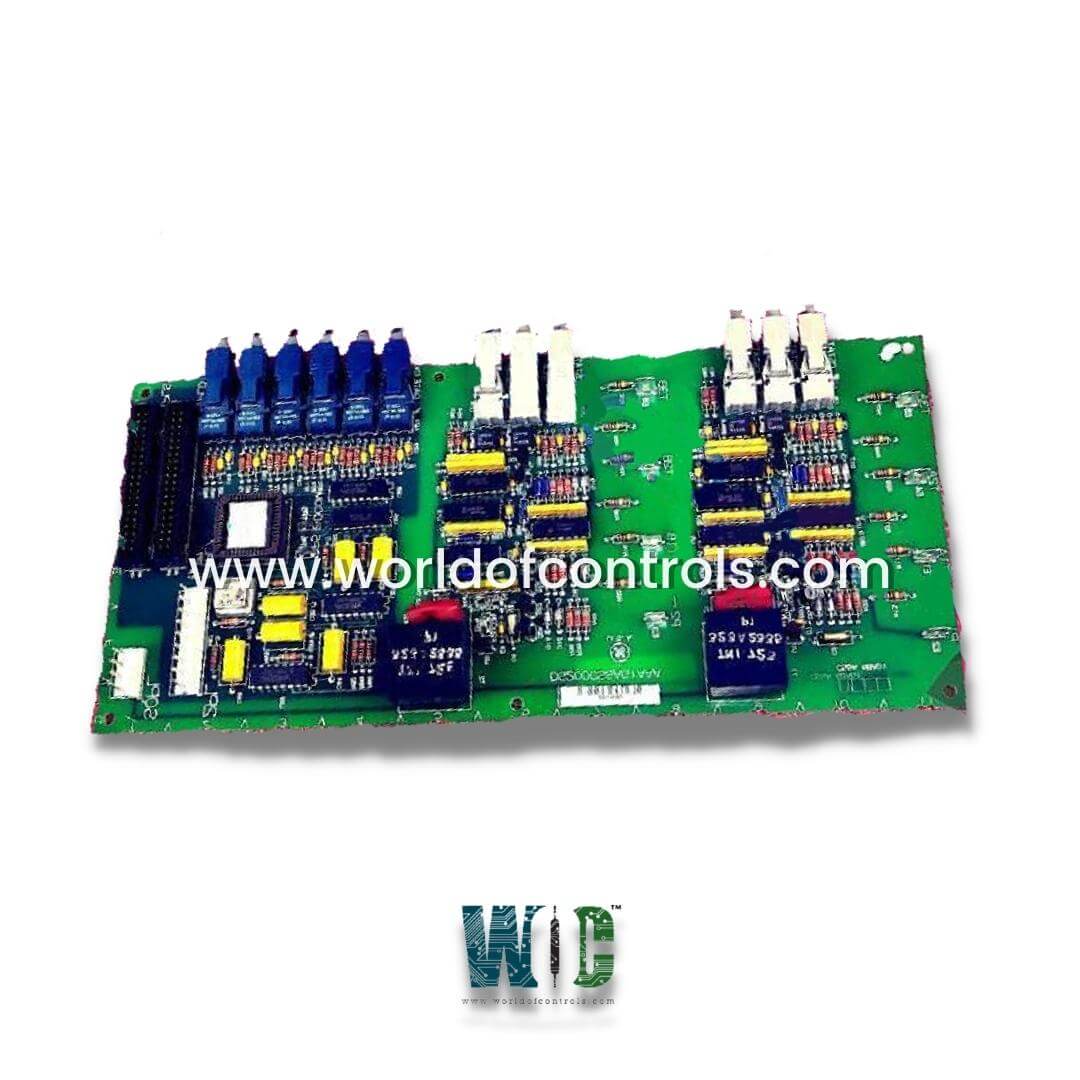SPECIFICATIONS
Part No.: DS200CSSAG1AAA
Manufacturer: General Electric
Country of Manufacture: United States of America (USA)
Product Type: Cell State Sensor Assembly
Availability: In Stock
Series: Mark V
Functional Description
DS200CSSAG1AAA is a Cell State Sensor Assembly developed by GE. It is a part of the Mark V control system. The PCB incorporates specific hardware components and specifications designed to enable its functionality within the system.
Features
- Connectors: It features two 40-pin connectors, one 4-pin connector, and one 9-pin connector, facilitating various interface requirements within the system architecture.
- Dimensions: The board measures 4 inches in height and 11 inches in width, ensuring compatibility with standard cabinet configurations and installations.
- Installation: Designed for integration into a board cabinet, includes pre-drilled holes that align with corresponding rack mounts in the drive cabinet. Installation involves using provided washers and screws to secure the board in place securely.
System primary operator interface
- The primary operator interface (I) is integral to industrial environments, providing essential tools for controlling and monitoring gas and steam turbines. It consists of several key components designed to optimize operational efficiency and facilitate effective management of turbine systems.
- At its core, the primary operator interface (I) includes a color monitor that displays real-time data such as system parameters, alarms, and graphical interfaces. This monitor allows operators to oversee turbine operations with clarity and precision. Alongside the monitor, there's a keyboard used for inputting commands, configuring settings, and directly interacting with the turbine control system. This enables seamless control over operational parameters critical for maintaining performance and safety.
- Operators navigate the interface using a cursor positioning device (CPD), which could be a mouse, trackball, or touch-screen monitor, ensuring swift and accurate interaction. Printers connected to the interface produce hard copies of system data, logs, and reports, supporting documentation and analysis efforts for comprehensive operational oversight. The central processing unit (CPU) within the interface processes commands, manages data inputs, and performs calculations necessary for effective control and monitoring of turbine functions, ensuring operational reliability.
- Connectivity is facilitated through an ARCNET cable, linking the primary operator interface (I) with the Mark V Control Panel. This connection enables seamless data transmission, ensuring real-time monitoring and command execution across the turbine system. Operators can use a single interface to monitor and control up to 8 gas and/or steam turbines simultaneously, or multiple interfaces for individual or grouped turbine management, providing flexibility in operational control.
- In operational scenarios, the primary operator interface (I) typically manages a single turbine and its associated driven device, focusing on efficient management and control. Operators maintain continuous communication with Mark V Control Panels, allowing for ongoing monitoring and proactive management of turbine operations. This setup underscores the interface's pivotal role in industrial turbine control systems, equipping operators with the necessary tools to optimize performance, maintain safety, and ensure operational excellence.
The WOC team is always available to help you with your Mark V requirements. For more information, please contact WOC.
Frequently Asked Questions
What is DS200CSSAG1AAA?
It is a Cell State Sensor Assembly developed by GE under the Mark V series.
How does the keyboard contribute to turbine control through the primary operator interface?
Operators use the keyboard to input commands, configure settings, and interact directly with the turbine control system. This allows for precise control over operational parameters critical for maintaining performance and safety.
What functions does the CPD serve in the primary operator interface?
The CPD, which can be a mouse, trackball, or touch-screen monitor, facilitates navigation and interaction within the interface. It ensures operators can navigate through screens and data efficiently, enhancing user interaction and control.
